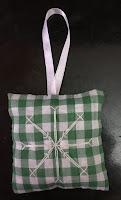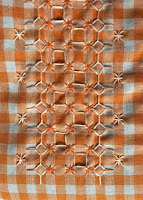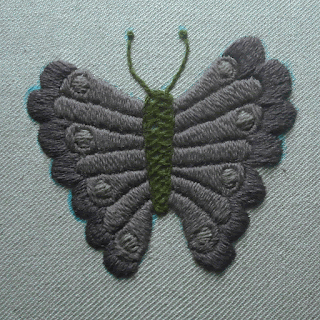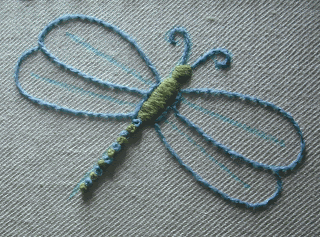I used illustrator to copy the design. I found that once I made the lines wide enough I could see the design through the lightboard. The water soluble fabric pen was easy to draw with and showed up on the velvet. I had to simplified it some and changed it a little more as I went along so it would work better with the metallic threads.

I used a yellow cotton thread to couch down the metallic thread. I followed around the outlines first. I made a wheel for the circle in the center. Above the center I made three lines instead of following the outline. When I got to the flowers I decided to change to take out all the rest of the circles to simplify the design even more. Instead I looped the thread around so they crossed over in the middle. This still gave a solid look to the center and I could use a continuous piece of thread to make the flower.
To assemble the ornament I trimmed the edges of the embroidery into an oval. I cut out an oval cardboard for the center and felt oval for the back. I laced the velvet over the piece of cardboard to snug it up tight. I sewed a metallic thread through the center of the top to hang it from. Then I backed the piece by sewing on the felt oval.
















































